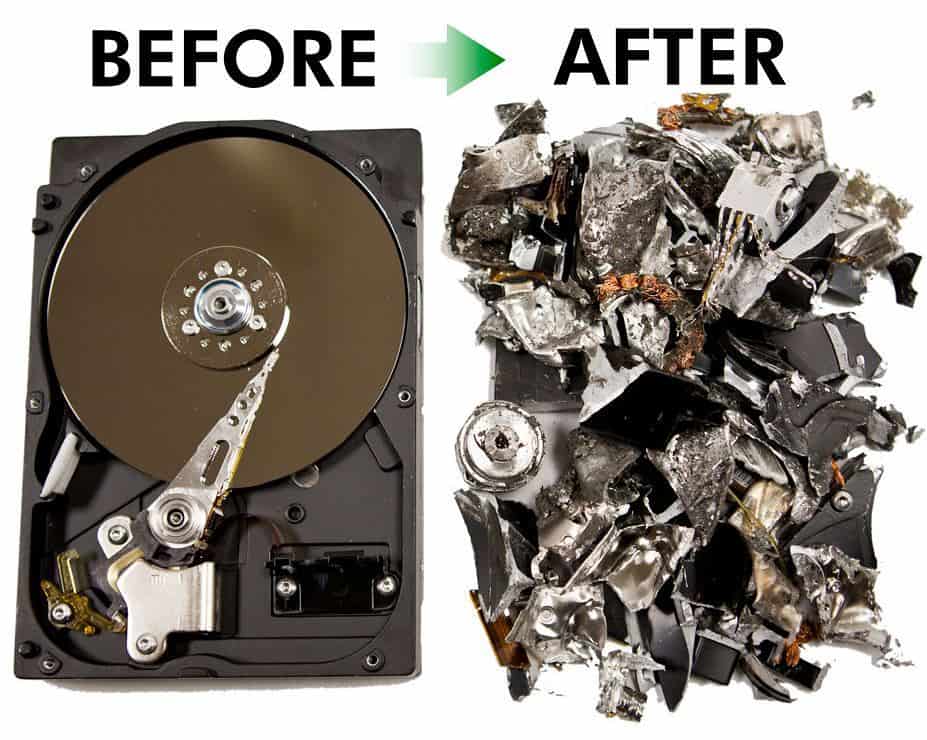Optimizing Cyber Security through Advanced Data Destruction Approaches
Optimizing Cyber Security through Advanced Data Destruction Approaches
Blog Article
Exactly How Proper Information Devastation Adds To Robust Computer Safety Solutions and Mitigates Threats of Information Breaches
In today's electronic landscape, the relevance of proper data damage can not be overstated, as it acts as an essential element of extensive computer safety and security services. By carrying out efficient information erasure strategies, companies not just shield delicate information from unapproved gain access to but likewise bolster their conformity with governing frameworks - data destruction. However, the implications of insufficient data destruction prolong beyond simple compliance; they can profoundly affect an organization's cybersecurity posture and reputation. Understanding these measurements elevates important concerns regarding the techniques in position and their performance in an age of intensifying cyber threats.
Significance of Information Destruction
In today's digital landscape, the significance of information devastation can not be overstated. As organizations increasingly count on digital assets, the possible threats connected with information violations and unauthorized accessibility amplify. Effective data destruction is a vital part of a comprehensive information protection technique, guarding delicate information from falling under the hands of malicious stars.
When data is no much longer needed, simply deleting data or formatting difficult drives wants. Residual information can often be recouped making use of conveniently offered tools, positioning significant risks to both companies and individuals. This highlights the requirement for durable data devastation methods that make sure all information is irretrievably erased.
In addition, regulatory compliance requireds, such as GDPR and HIPAA, stress the obligation to safeguard delicate data, including its correct disposal. Non-compliance can bring about extreme lawful repercussions and punitive damages. data destruction. Thus, integrating efficient information destruction procedures not only boosts protection yet likewise strengthens an organization's credibility and reliability

Techniques of Secure Information Erasure
A number of efficient methods of safe and secure data erasure can be employed to guarantee that sensitive info is completely removed from storage space devices. One extensively identified technique is data overwriting, which involves replacing existing information with arbitrary patterns numerous times. This approach significantly decreases the possibilities of data recuperation, although it might not work against innovative forensic methods.

Physical devastation is additionally a trusted strategy, where storage space devices are rendered pointless with shredding, crushing, or incineration. This approach makes certain that information can not be recouped by any type of methods but calls for cautious handling of dangerous products.
Finally, specialized software devices designed for safe information erasure give capabilities that follow numerous erasure criteria. These devices often include attributes like verification processes to confirm effective information destruction.
Utilizing these methods in combination can enhance data safety and mitigate the threats associated with data violations, making certain that delicate info is not inadvertently subjected.
Legal and Conformity Considerations
The techniques used for protected information erasure not only offer to safeguard delicate info but likewise needs to align with lawful and compliance frameworks controling data security. Organizations are needed to abide by various policies, such as the General Data Security Regulation (GDPR), the Medical Insurance Portability and Responsibility Act (HIPAA), and the Repayment Card Sector Information Safety And Security Requirement (PCI DSS) These regulations mandate specific protocols for information dealing with and destruction, guaranteeing that delicate and individual data is irretrievably gotten rid of when no longer needed.
Failing to adhere to these lawful demands can result in significant charges, consisting of penalties and reputational damages. Additionally, organizations need to maintain records of information destruction processes, showing conformity throughout audits or investigations. This paperwork not only secures against lawful effects however likewise enhances depend on with customers and stakeholders, showcasing a dedication to data protection.
Including legal and compliance considerations right into information devastation methods is essential for any type of company. It lessens the threat of data violations and illustrates a proactive method to protecting delicate details, inevitably fostering a society of protection and liability across the organization.
Influence On Cybersecurity Pose
Efficient information damage significantly improves a company's cybersecurity pose by minimizing the prospective assault surface area for cyber threats. When sensitive information is not appropriately damaged, it continues to be easily accessible to destructive actors who can exploit this info for unapproved access, identification theft, or business reconnaissance. By executing durable information destruction protocols, companies can effectively reduce the threat of data breaches and boost their total protection framework.
Furthermore, the secure disposal of obsolete or unnecessary information not just shields sensitive information yet likewise aids organizations abide by sector policies and requirements. Failure to sufficiently destroy information can bring about extreme legal repercussions and reputational damages, additional jeopardizing a company's cybersecurity stance.

Inevitably, prioritizing reliable data destruction is vital for fostering a robust cybersecurity pose, ensuring that organizations remain watchful versus progressing cyber risks while safeguarding their important properties and stakeholders.
Best Practices for Organizations
Executing ideal methods for data destruction is important for organizations intending to secure delicate information and alleviate cybersecurity risks. Companies need to establish an extensive data damage plan that lays out procedures and obligations. This policy ought to abide with pertinent laws, such as GDPR or HIPAA, making sure legal conformity.
Second of all, it is important to utilize accepted information sanitization techniques, including data cleaning, degaussing, and physical damage, customized to the kind of data and storage space tool. Utilizing licensed specialists visit this site right here for data destruction services improves the reliability of these approaches.
Furthermore, companies must keep an in-depth stock of all information storage space tools, guaranteeing that all obsolete or replaced equipment undertakes damage. Regular audits of data damage techniques can assist determine weaknesses and boost conformity.
Staff member training is an additional essential facet, as team should comprehend the importance of information devastation and abide by developed protocols. Organizations ought to document all data look at this website damage tasks to give liability and traceability, which can be very useful during audits or in the occasion of a breach.
Conclusion

One commonly recognized method is information overwriting, which involves replacing existing data with random patterns multiple times.The approaches utilized for protected data erasure not only serve to protect sensitive information yet also must line up with legal and compliance structures regulating information defense. These regulations mandate details procedures for information managing and destruction, making certain that delicate and personal information is irretrievably gotten rid of when check out here no longer needed.
By implementing durable data destruction protocols, companies can efficiently reduce the risk of data violations and boost their total safety and security framework.
In conclusion, proper data destruction is important for enhancing computer security services and alleviating the threats associated with information violations. - data destruction
Report this page